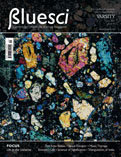SATURDAY, 29 JANUARY 2011
Meteorites have fascinated humans throughout the ages. The ancients referred to them as “rocks from the sky” and they still have an odd ability to amaze us, but, more than that, they actually give us insight into the birth of our solar system. Many of the meteorites we see today were created at the same time as the Sun, Earth and other 7 planets (8 if you can’t bear to let Pluto go) were formed from the accretion disc of gas and dust that condensed to form the early solar system. They keep a record of their rich history of geological processes and are therefore a portal into time as well as space. There are a number of classes of meteorite, but the vast majority that are recovered on Earth are known as chondrites, owing to the presence of spherical mineral inclusions known as chondrules. These inclusions are spherical because they are formed in zero gravity, melting and reforming during their elliptical orbit around part of the accretion disc of a newborn star.The chondrite class is a sub class of the stony meteorites formed from an early solar system. They show no evidence of modification due to melting or differentiation of the parent body from which they fragmented (which, in the case of chondrites, is commonly asteroids). These meteorites can be dated by geologists by analysing the radioactive isotopes of elements with known half lives compared to their respective daughter isotopes. This leads to the conclusion that our solar system is 4.6 billion years old (give or take a few million years, but who’s counting?). The second sub class of stony meteorites are known as the achondrites and as the name suggests these are free from chondrules. They are derived from parent structures that have undergone serious geological processes since formation, such as planets, or other stellar bodies such as the moon. Although these cannot give any information into the origin of our solar system, they are an interesting tool for research into extraterrestrial activity and the presence of chiral amino acids on these meteorites has strengthened the argument for life outside our planet.
The cover image is of a thin section of the chondritic Bjurbole meteorite witnessed under an optical microscope through crossed polar light to give an array of birefringent colours from the various minerals present. The thin section shows a chondrule primarily composed of the silicate minerals olivine, clinopyroxene and orthopyroxene, which is very common. These minerals are held in a very fine grained matrix which consists largely of the elements Iron and Nickel as well as finer grained dust. The meteorite pictured on the cover belongs to Dr. Albert Galy and is used in the second year teaching labs of the Earth Sciences Department. The Bjurbole meteorite (named because of where it was discovered in Finland) was broken into many pieces as it collided with sea ice in the gulf of Finland on March 12th, 1899, and is considered unusual due to the large size of the chondrules present.

